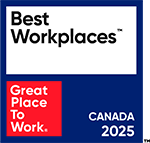
Interview - Gail Lord
“Making the world a better place through ‘Soft Power’” (Part 2)
July 20, 2021
In Part 1 of the interview, we introduced Gail Lord who together with her late husband Barry Lord, is recognized for transforming museums and promoting their positive role in society. In Part 2, we learn about the gender, racial and ethnic imbalances specific to the museum sector; and the fundamental responsibility that museums, as public cultural institutions, play in promoting healthy and thriving communities.
Gail is co-founder and president of Lord Cultural Resources, the world’s leading cultural planning firm.
An influential voice in the fields of museums, creative economy and cultural districts, Gail sees museums as powerful levers for cities aiming to boost economic prosperity and grow their international standing.
Gail has authored six museum planning manuals and several books including “Cities, Museums and Soft Power,” that have served as guiding principles for over 2,600 projects completed by Lord Cultural Resources across 57 countries.
In 2017, Gail was honoured as a Member of the Order of Canada for her contribution to museum planning and management, and her work in supporting the cultural sector in Canada and abroad. In 2014, the Government of France appointed her the Officer in the Order of Arts and Letters for her contributions to the arts.
Level5 Strategy’s Managing Partner Hua Yu interviewed Gail to gain insights into the $50 billion museum sector and learn about her fascinating career journey.

Hua: You have done so much for the museum sector. What are your proudest achievements?
Gail: It’s hard to choose because my wonderful colleagues at Lord Cultural Resources and I have worked with talented museum professionals on projects in 450 cities world-wide.
A personal favourite is the cultural centre called The Lowry, in Salford, a small city just outside Manchester. Salford was the poorest city in Europe in 1848 and still in 1968. In the 1970s, the city government decided to modernize the city, starting with the polluted Manchester ship canal that was making parts of the town unliveable. After cleaning up the ship canal and building a new commercial center around it, they planned to create a destination cultural attraction “like the Sydney Opera House.” But Salford residents rejected this concept — this was a working class city, and opera didn’t relate to them. So, the architects called Lord to find an alternative cultural attraction — and I went to Salford.
Our general philosophy then and now is that cultural facilities have to relate to people’s lives and history and can’t be copied from somewhere else. The Sydney Opera House was transformational for Sydney, Australia — it wouldn’t be for Salford. We also believe that every community has culture and creativity — our job is to help develop it.
When we conducted interviews and met people in Salford, we learned that one of the most beloved English artists, L.S. Lowry, lived and worked in Salford. To give some context, Lowry is to England what the Group of Seven is to Canada. He painted the daily life of working people going to and from work, at home and in pubs. The characters look like stick figures and have a very particular local meaning. Salford had a large collection of L.S. Lowry paintings stored in a basement in very bad conditions. I recommended that the Lowry Collection be re-installed in the new cultural center building. The community was enthusiastic, while the financial support came from government, the private sector and the European Union. The Lowry Centre (as it is called) opened in 2000 and was named the best millennium project outside London. With success came economic and social benefits for the local population and considerable pride when Salford won the BBC competition to be the location for its northern headquarters, defeating Manchester!

Gail Lord with Lowry’s then director David Alston at the opening of The Lowry, the flagship of the 2000 Millennium Project for the Arts and a cornerstone of the transformation valued at £1.4bn. It is a proof that museums and galleries can and do change lives

The Lowry, a theatre and gallery complex at Salford Quays, Salford, Greater Manchester, England.
I am especially honoured to have provided planning services for the Canadian Museum for Human Rights in Winnipeg, which is the world’s first national museum dedicated to human rights. This is a powerful visitor experience — a story-telling museum that is the most technologically advanced in North America. The museum has changed the identity of Winnipeg which had a racist reputation because of its treatment of indigenous residents. Today Winnipeg continues to struggle with these issues but identifies as a human rights education city and the repository of the archives of the Truth and Reconciliation Commission. The Canadian Museum for Human Rights is also Canada’s first national museum located outside the National Capital Region — thereby opening the door to national museums being located closer to Canadians, like Pier 21 National Immigration Museum in Halifax which we also worked on.
A U.S. project I am particularly proud of is the Museum of the African Diaspora in San Francisco, a tiny museum created as part of a downtown redevelopment zone in the 1990s. When we started the work, we conducted a lot of community consultations and looked at the history of San Francisco. We learned that the city was the home of The League of Nations, formed in 1919, which was the predecessor of the United Nations. So, there was this important international context, a kind of soft power context. But then we have the tragedy of the city where African American people were marginalized. Many lost their homes due to urban development that created the city tourists like to visit. In the 1990s, few used the word “diaspora” to refer to the spreading of Africans and African culture through the world. In this museum the African diaspora starts with the evolution of humans in Africa and takes visitors to the present. To give you an idea of the power of this place, when you walk in, you look into a mirror with the following question written on it: “When did you discover you are African?” This museum is dedicated to the concept that there is no such thing as race — we’re all human and we all came from Africa.

Canadian Museum for Human Rights, Winnipeg, opened in 2014, is one of Gail Lord’s great museum planning and strategic achievements.

Construction site of the Canadian Museum for Human Rights. Gail Lord with Gail Asper, Trustee, Canadian Museum for Human Rights, approx. 2013.
Hua: Can you tell us about how your experience has reflected your vision of the firm you created? Lord Cultural Resources has a multicultural and multilingual work force in the service of your clients who are globally diverse. Your team of consultants speaks 15 languages and you have offices around the world. How do you grow your business while continuing to be one of world’s foremost museum planners?
Gail: We always believed that if we shared knowledge, we’d gain more knowledge. Neither Barry nor I had a business background, and if we had MBAs, we probably wouldn’t have started the company because it’s very risky. We didn’t know anything about business. But we love museums and the cultural sector and how it improves human understanding and well-being. Fortunately, there are professionals who share these values and have joined the firm bringing essential skills to museums and culture. Our team includes financial analysts, architects, designers, historians, urban planners, strategists, marketing experts, scientists and writers —each with a cultural focus and experience. Today the company includes people who have worked with Lord for decades and others who joined just a few months ago. Most consultants in the firm travel extensively, up to 50% of the time, even more. COVID has limited travel and meant working from home. We have used the time to be closer as a team with weekly “huddles” where we all get together to share ideas via Zoom.
For many years, our vision statement was “Creating cultural capital” to communicate that culture is a form of capital that improves cities and local economies. Now, in the post-COVID world, the ethos is somewhat different. As a result, our entire staff worked together on a new vision statement that I love — “Making the world a better place through culture.”
Hua: You are the recipient of the Order of France and Order of Canada. What do these recognitions mean to you personally?
Gail: For me personally they mean a lot. As a woman in business, I’ve been fortunate in that my husband was proud of me and supported me and gave me an enormous amount of self confidence. We were completely equal partners. However, I’m very aware of the fact that there are many people who see women as inferior. They thought it was my husband who had all the ideas. No matter what your partner says he can’t alone change the perception of the business world about women. These awards were recognition of what I had accomplished as an individual leader.
It was magical in 2017 when McMaster University conferred honorary doctorates on both Barry (who was an alum) and me (who was not). It was only the second time in its history that the university had conferred this honour on a married couple.

Gail Lord during Order of Canada Reception, Rideau Hall, Ottawa 2017.

Gail and Barry Lord receiving honorary doctorates at McMaster University, Hamilton, 2016
Hua: Why is it important for museums to have their own brand identity?
Gail: A museum’s identity has to be rooted in the reality of the community. It has to link its collections, research and ideas to the content of peoples’ lives and concerns. I think that, in the post-COVID reality, the sense of identity needs to extend beyond the walls of the museums and into place making. This is why, in our projects today, we’re equally concerned with the exterior space. Unless people are engaged with the exterior space of the museum, they’re not going to venture inside. The good news is that thanks to technology they may visit digitally, and that may lay the ground for a first physical visit.
Hua: The majority of people working in museums are women. The majority of people who visit museums are women. And yet, in the museum sector, most of the senior leaders are still men. How can we change this?
Gail: In the smaller museums across North America and the UK, women directors outnumber men. These museums are underfunded and underprivileged. When you get to the higher-level museums with the bigger budgets, the directors tend to be men. So, there’s a class aspect to it. Now, there has been significant social change and women, including women of colour, are being recognized for their skills and achievements. However, characteristics that would be acceptable in a man — “aggressive” and “outspoken,” for example — are often perceived differently in a woman. Women exhibiting these qualities are frequently described as strident or loud, or angry; so we have to stand up for each other and work very hard against stereotyping.
The challenges women experience in the sector are even more pronounced for people of colour. I have made it a strong mission, in partnership with Joy Bailey-Bryant who is President of Lord USA, to create leadership opportunities for indigenous and people of colour at Lord Cultural Resources and in the cultural sector. This is why we established the BIPOC (Black, Indigenous and People of Colour) Fellowship. It helps fund leadership positions for BIPOC professionals in the gallery, library, arts and museum sectors, and provides a mentorship program for the fellows and their employer institutions. This is important because museums won’t be able to fulfill their potential as places for people until their leadership reflects the people.



